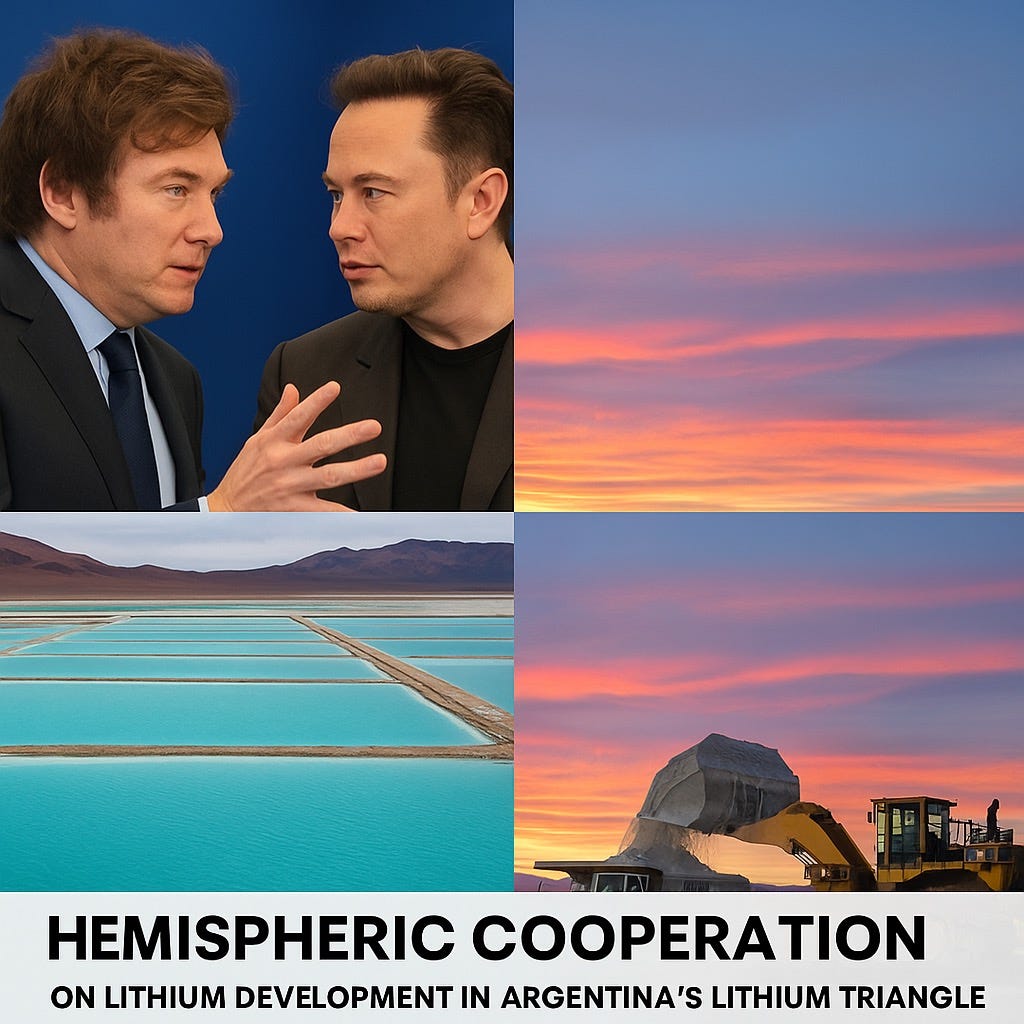If Shale’s Done Swinging, What’s Next?
The Case for Lithium as the Western Hemisphere’s Next Strategic Energy Pivot
By Eric Greene/Greene Financial Advisory
1. The End of an Era
U.S. shale changed the world — until it didn’t. After more than a decade of energy dominance, signs of exhaustion are setting in. Plateauing output, ESG pressures, and investor fatigue have all taken a toll. The shale revolution gave the United States independence, leverage, and security — but the question now is, where does the next wave of strategic energy leverage come from?
2. Enter Lithium — But Not as a Speculative Bet
This isn't about riding the hype cycle. It's about designing infrastructure. Argentina — unlike its Lithium Triangle neighbors Bolivia and Chile — is not just resource-rich, it’s also open for business. President Javier Milei’s aggressive market reforms and pro-West stance have created a rare alignment: global need meets political will.
3. The Blueprint — Replacing Shale’s Role
Shale powered America’s energy independence. Lithium can power supply chain independence and strategic autonomy. Upstream producers like Galan Lithium and Lithium Americas are already active. Midstream infrastructure players — such as BlocPal with its tokenization technology — can unlock investment velocity. Downstream innovators like Ucore, FREYR, and Solid Power are building the battery systems of tomorrow. As Dr. Jennifer I. Considine noted: “This is the kind of thesis that highlights the intersection of geopolitics, energy transition, and investment.”
4. Proof of Execution — The Southern Cone Advantage
This isn’t a theory — it’s happening. Infrastructure is being built across the Southern Cone. Argentina’s rail system is connecting lithium basins to export hubs. Uruguay’s ports are functional, transparent, and open for trade. Tech players like Hive have already begun large-scale energy deployment in Paraguay. These are the quiet signals that indicate capacity — not just potential.
5. Policy & Incentives — The Missing U.S. Angle
In the United States, lithium development faces uphill battles — local resistance, federal regulation, and ESG gridlock. While states like Nevada and North Carolina have projects in motion, execution is slow and uncertain. Meanwhile, Argentina and Uruguay are inviting private capital with clear tax incentives and logistics-ready systems. The Southern Cone isn’t just easier — it’s faster, and in this race, speed is leverage.
6. Conclusion — A Strategic Invitation
If shale gave the U.S. fifteen years of energy leverage, lithium could do the same for supply chain control, battery innovation, and geopolitical autonomy — but only if the West looks south before others move in. The path forward won’t be built on speculation. It will be designed by those who understand how capital, minerals, and political will converge. That future is forming now — in Argentina, Uruguay, and across the Southern Cone. I’m architecting a strategic framework across the region — connecting lithium to capital, to technology, to execution.
We’re not chasing trends. We’re designing infrastructure.
The Lithium Triangle isn’t just a mining play — it’s a blueprint for hemispheric independence, private capital alignment, and a rare moment of geopolitical clarity.
I’m building the framework across Argentina and Uruguay — connecting lithium to trust, to trade, and to execution.
DM me if your interest goes beyond curiosity.
— Eric Greene | Greene Financial Strategic Advisory





